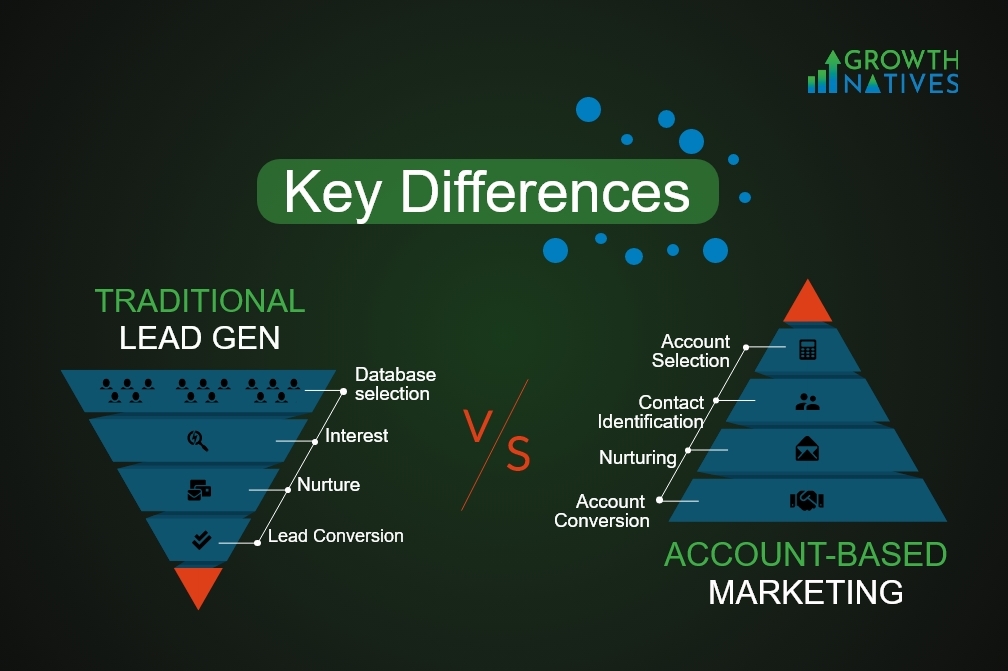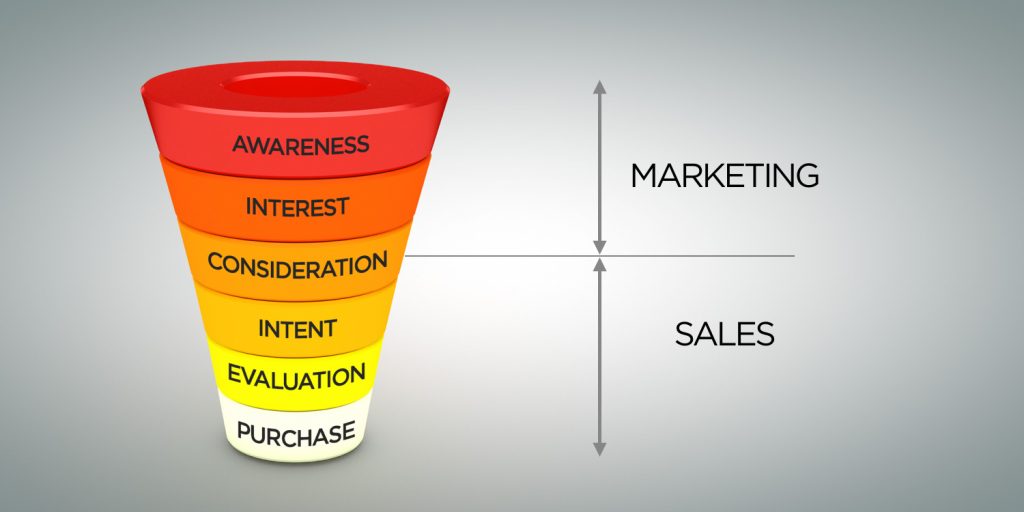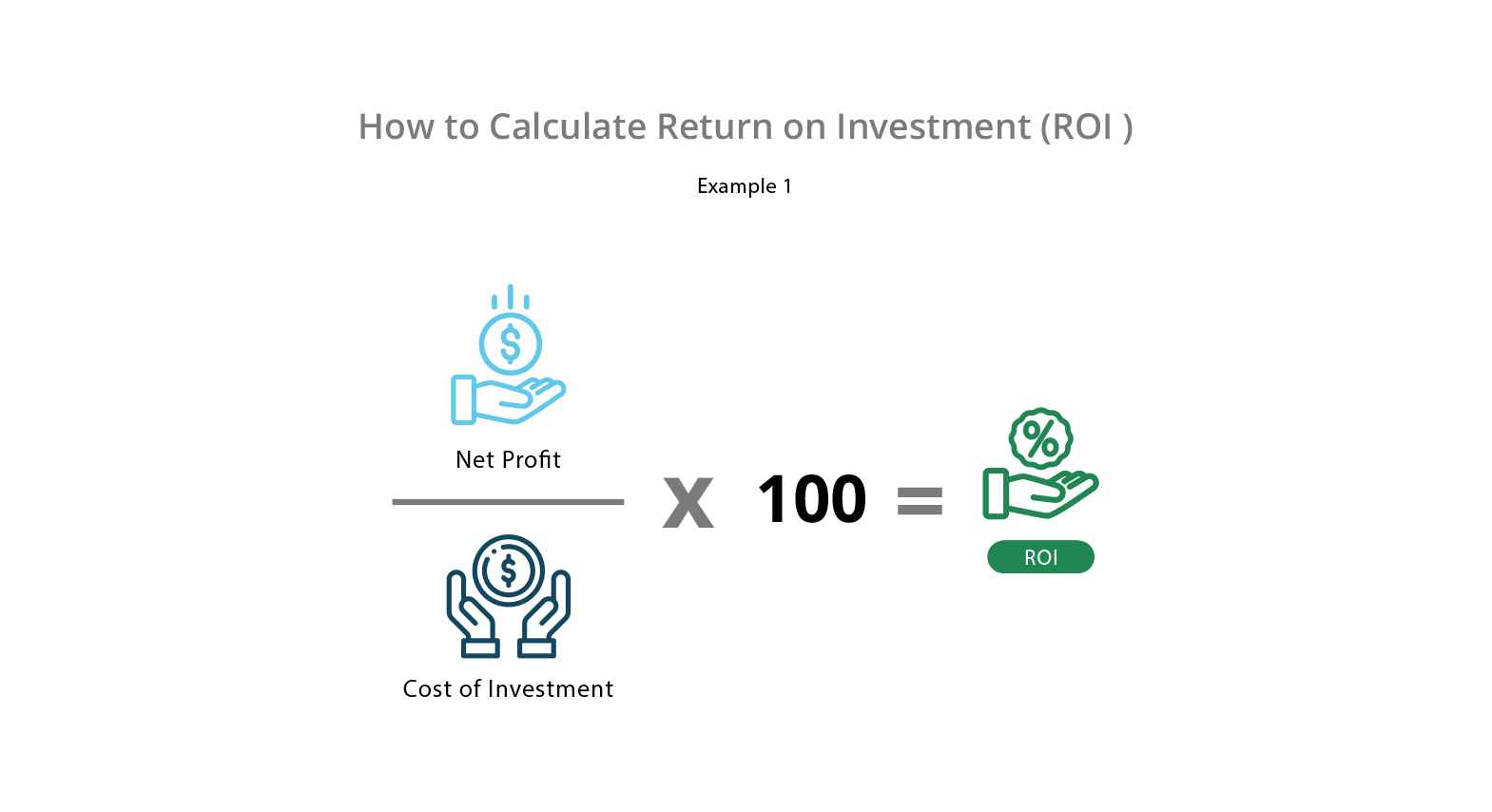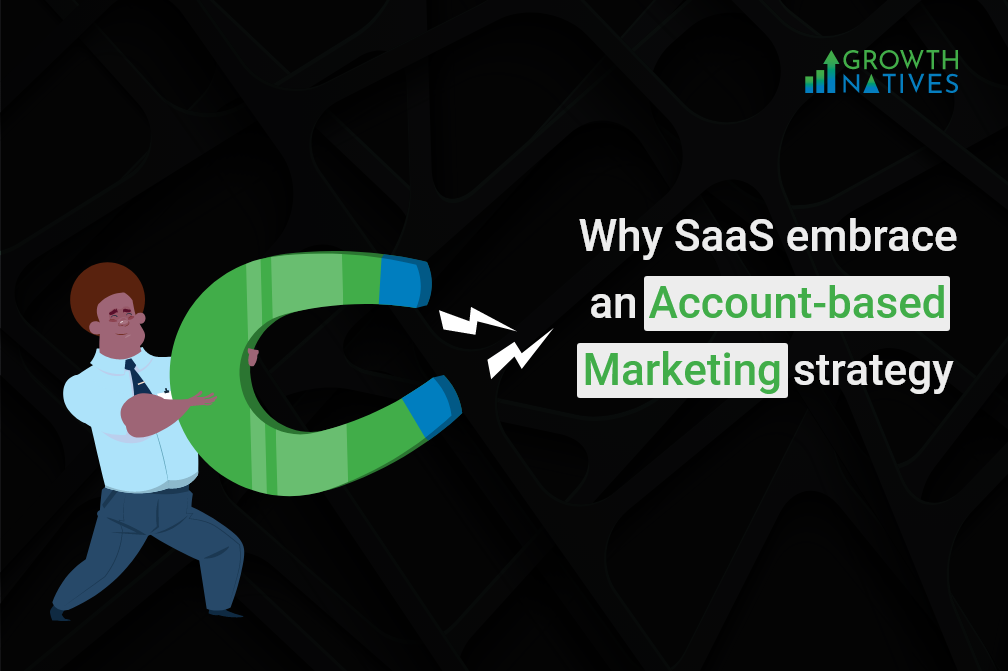
Account Based Marketing (ABM) Vs Traditional Lead Generation – Key Differences
By Sakshi Arora
Nov 11, 20218 min read
Account-based marketing (ABM) is a marketing strategy that focuses more on high-value targets. This approach is driven by user data and delivers a more personalized approach to better capture them.
The strategy takes the preferences and attributes of the accounts to craft a specific approach towards them. With the help of ABM, you can make the maximum profit from the targeted accounts by cross-selling.
Unlike a focused approach, the spectrum of traditional lead generation is exponential, which helps in intriguing a broader audience. However, traditional marketing is extremely diverse, resulting in a lack of focus on the key leads.
Traditional lead generation creates maximum business opportunities for the long run, which can be accomplished through social media, email marketing, and other modern lead generation tactics.
How do they differ?
In the ABM approach, the marketing teams create a list of prospects and then proceed with campaigns to capture them. These teams follow a robust outbound strategy over an inbound strategy so that they can seamlessly reach the target leads.
On the other hand, If you are looking for more targeted operations, then choosing ABM is a sound decision - as traditional lead generation is uncertain of generating more qualified leads as compared to ABM. Several companies work on a defined budget, and using a traditional approach for lead generation can take a huge toll on the company resources.
1. Lead focus
The ABM and traditional lead generation strategies have a different take on generating leads.
ABM emphasizes more on high-value targets, while traditional lead generation works with a loosely targeted approach for a wide audience pool. This is the reason companies opt for ABM, as more leads do not always convert.
The goal of a business is to produce qualified leads, which is not always possible with traditional strategies. The high-value leads are followed up by personalized and relevant content throughout their buyer journey.
ABM generates the best by using cross-selling and upselling strategies. Simply said, ABM pursues quality while traditional lead generation tactics prioritize quantity.
2. Clicks
When it comes to clicks, traditional lead generation tops the chart. Clicks and views are one of the important aspects that shows how far the net of traditional lead generation tactics reached.
On the other hand, ABM strategies cannot determine which click or view has high value.
3. Conversions
In the aspect of conversions, the number can go either way. ABM gets its job done by going after high-quality leads and they are likely to be converted based on the strength of the approach.
A traditional lead generation targets a broader pool, thus having the potency for a high conversion rate. Both ABM and traditional lead generation offer high conversion, so depending on the present marketing scenario, companies can choose either.
4. Relation between marketing and sales department

In account-based marketing, the marketing and sales teams are aligned with each other as these two departments go hand in hand for the ABM operations. These two departments work together to identify the target accounts and then create personalized campaigns to attract them.
However, traditional lead-based marketing has a disadvantage with its traditional corporate structure. As the marketing and sales sectors work separately, which makes it is hard to accomplish the processes. Even if the leads generated are moved down to the sales sector there is a lack of streamlined flow between these operations.
5. Scalability
Scalability is the forte of traditional lead generation strategies. As ABM requires more time and effort to target leads, it is known to be less scaler than traditional methods.
Traditional lead generation is crafted for a wider audience. Therefore, traditional marketing is much easier and time-consuming to scale as it is not highly personalized.
6. Personalization
Attracting customers has become more difficult than ever. Thus, personalization helps in setting brands apart from their competition and catches the eye of target prospects. If we talk about personalization, it is complex with a wide pool of target leads, which is why it is possible in ABM strategy.
7. The extremity of the sale
Traditional lead-based marketing works to ensure maximum leads are generated. This only leads to smaller individual account deals. Collectively it can make a big margin, but if you seek major enterprise-level deals you require account-based marketing strategies.
With a targeted approach, you have higher chances to secure high-value deals. The high-priority accounts of existing customers are further expanded with the help of ABM.
Read More: Focusing on Lead Nurturing for B2B Marketing Success
8. Distribution channels
The distribution channels vary completely based on the approach you pursue. In traditional lead generation, marketers use organic channels like blogs, articles, social media posts, etc.
Account based marketing is the complete opposite, as its approach is much more direct and focused. The marketers make use of emails, direct mails, social and other direct interactions.
9. Customer impression
The traditional lead generation does not take the fullest consideration as the strategies paved are generic and not targeted. They might only satisfy the customer within the buyer’s journey.
In ABM, a lot of investments are made for targeted personal interactions. This forms a good impression that results in satisfied customers and has them coming for future sales. This is a result of constant relevant content paired with personal interactions.
10. Customer lifetime value
Traditional lead generation is a great way to attract a larger audience. However, the large pool of audience can possibly result in unqualified leads. For most of them, it could be a temporary customer relationship that mostly lasts till the first purchase is completed.
The targeted approach in account-based marketing aims in producing more qualified leads, which can result in increasing customer lifetime value. The operations with ABM are strategically focused to nurture customer relationships.
With the help of ABM, you can make the most out of your clients and build long-term relations with your end-users. The initial stages will require lots of investments but rest assured these resources can reward you in the long run.
11. Return on investment (ROI)

Investments in traditional lead generation tactics are figuratively low. as they require little to no cost for a sustainable time. For example, social media posts, if done organically, this type of content will significantly increase brand awareness with no costs.
On the other hand, ABM needs a hefty investment to get up and running. It requires time, resources, and additional efforts. As it is a more targeted approach, thus it requires personalization, where a great deal of research and analysis is required for each client.
Which approach is better? Key Takeaways
Now that you have a clear idea of what both approaches bring to the table, it will be easy for you to use them according to your marketing needs. The strategy that works in your favor is entirely dependent on your short-term or long-term objectives.
In the traditional method, you can create a wider net and capture most of the leads. This will give you a plethora of potential clients. The only drawback is that their value is dependent on the approaches and efforts made towards them.
Account based marketing can secure you the most valuable leads that you can come across. With a focused and personalized approach, you can pave the way for long-lasting customer relationships and make the most out of your current audience.
The biggest catch is that personalized marketing takes a great deal of time and effort. It is not an easy task to sit through and analyze every client’s behavioral patterns to provide a custom and personalized experience.
Account based marketing has a high ROI but is a bit time-consuming as compared to traditional lead generation.
In layman’s terms, we could say that the traditional lead generation is a shotgun that spreads to a wide area but in short range. Whereas account-based marketing is a sniper rifle that can hit the target perfectly but in limited numbers.
Conclusion
Choosing the right strategies is a difficult decision to make but has to be made nonetheless. Be it account-based marketing or traditional lead generation, they have their rightful benefits. Simply put, the right tactic will not be the same for every organization.
Your success depends on how you use the tactics to your advantage. If you are still in a dilemma which one to choose, contact our experts at Growth Natives info@growthnatives.com for more refined answers.




